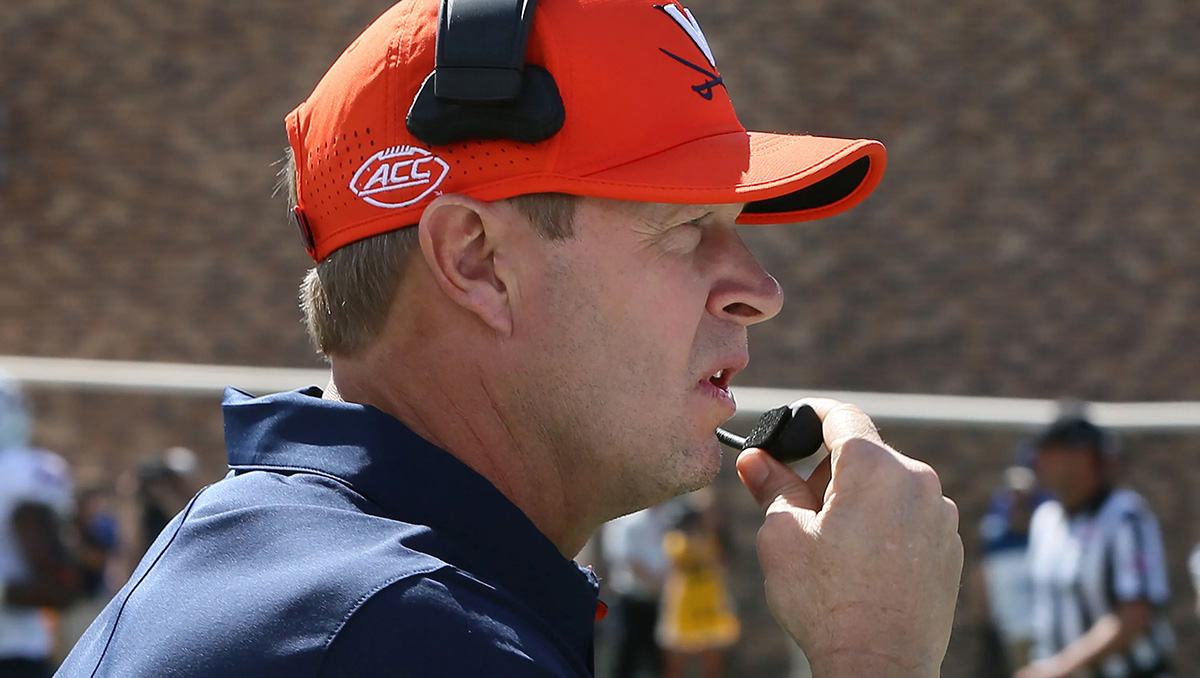Home>Finance>What Are Buyouts In College Coaches’ Contracts?


Finance
What Are Buyouts In College Coaches’ Contracts?
Modified: December 30, 2023
Learn about the financial aspect of college coaches' contracts and understand the concept of buyouts. Explore the implications and significance of buyouts in the world of college sports finance.
(Many of the links in this article redirect to a specific reviewed product. Your purchase of these products through affiliate links helps to generate commission for LiveWell, at no extra cost. Learn more)
Table of Contents
Introduction
College sports in the United States have long been a source of passion, pride, and excitement for fans across the nation. As the popularity of collegiate athletics continues to soar, the stakes for success and the financial investments involved have reached unprecedented levels. In the world of college coaches’ contracts, one term that often arises is “buyouts.”
Buyouts refer to a financial arrangement built into the contracts of college coaches that allows the university or athletic department to terminate the coach’s employment before the contract term ends. In return, the coach receives a pre-determined amount of compensation. This amount, commonly referred to as the buyout amount, serves as a form of protection for both the coach and the university.
The concept of buyouts in college coaches’ contracts serves multiple purposes. First and foremost, it provides a sense of job security for the coach. By including a buyout clause, a coach can feel confident that they will receive financial compensation if they are terminated without cause. This provision also incentivizes coaches to commit to long-term programs, as the buyout amount acts as a deterrent for coaches considering leaving for another job before their contract expires.
For universities and athletic departments, buyouts act as a safeguard against the potential financial repercussions of terminating a coach’s contract prematurely. By establishing a set buyout amount, the university can limit its liability and ensure that it will not face significant financial burdens in the event of a coaching change. Additionally, buyouts can serve as a negotiating tool when hiring new coaches, as programs can use the presence of a buyout clause to attract top-tier candidates.
The determination of the buyout amount in college coaches’ contracts is influenced by various factors. The coach’s success, reputation, and demand in the market all play a role in determining the buyout amount. High-profile coaches with successful track records command higher buyout amounts, as their departure could have a substantial impact on a program’s success and financial stability. On the other hand, coaches with lower profiles or less proven records may have lower buyouts, reflecting the perceived lower risk associated with their departure.
In the next sections, we will explore the factors that influence buyouts in greater detail, delve into the calculation methods used to determine buyout amounts, and examine some of the controversies surrounding buyouts in college coaches’ contracts.
Definition of Buyouts in College Coaches’ Contracts
In the world of college athletics, a buyout refers to a provision included in the contracts of college coaches that allows either party to terminate the employment before the contractual term ends. This termination can occur due to various reasons, such as poor performance, violation of policies, or if the coach decides to pursue another opportunity.
The buyout provision is essentially a financial agreement that outlines the compensation the coach will receive if their contract is terminated. This financial compensation is commonly referred to as the buyout amount. The purpose of the buyout is to protect both the coach and the university in the event of a premature termination.
When a coach’s contract is terminated, the buyout amount serves as a form of compensation for the coach who is losing their job. In most cases, the buyout amount is a significant sum of money, often reaching several millions of dollars. This amount is paid to the coach as a lump sum or in structured payments over a specified period of time.
From the university’s perspective, the buyout is intended to mitigate the potential financial consequences of terminating a coach’s contract. By including a buyout provision in the contract, the university can protect itself from any legal or financial disputes that may arise from an abrupt termination. It also acts as a deterrent for coaches who might consider leaving before their contract term ends, as they would be required to pay a substantial buyout amount to the university.
It’s important to note that buyouts are typically negotiated between the coach and the university or athletic department during the initial contract discussions. The terms of the buyout, including the amount and payment structure, are agreed upon and documented in the contract. This ensures that both parties are aware of their rights and obligations should a termination occur.
Buyout provisions can vary significantly depending on the coach’s profile, success, and market demand. High-profile coaches with proven records of success often have higher buyout amounts due to the potential impact of their departure on the program’s success and financial stability. On the other hand, coaches with less experience or a lower profile may have lower buyouts, reflecting the lower risk associated with their departure.
In the next sections, we will explore the purpose of buyouts, the factors that influence their determination, and the methods used to calculate buyout amounts in college coaches’ contracts.
Purpose of Buyouts
The inclusion of buyouts in college coaches’ contracts serves multiple purposes and benefits both the coach and the university or athletic department. Let’s explore some of the key purposes of buyouts:
1. Job Security: Buyouts provide a sense of job security for coaches. By having a buyout clause in their contract, coaches can feel confident that they will receive financial compensation if they are terminated without cause. This provision helps mitigate the uncertainties of the coaching profession, where job security can often be tenuous.
2. Commitment and Long-Term Stability: Buyouts also serve as a deterrent for coaches who may be tempted to leave before their contract term ends. The presence of a buyout amount encourages coaches to commit to the program for the duration of their contract, as the financial consequences of leaving early can be significant. This commitment promotes stability within the coaching staff and provides continuity for the team and program.
3. Financial Protection for Universities: The primary purpose of buyouts from the university’s perspective is to protect their financial interests. A termination without cause or an unexpected departure of a high-profile coach can have significant financial implications for the university. Buyout provisions help minimize the potential financial burden by establishing a predetermined compensation amount. This protection allows universities to plan their budgets and avoid sudden financial strains.
4. Negotiating Tool: Buyout clauses can also act as a negotiating tool when hiring new coaches. Universities can leverage the presence of a buyout provision to attract top-tier candidates by providing a guarantee of financial security in the event of a termination. This assurance may sway coaches to choose one program over another, particularly in competitive hiring markets.
5. Control over Coaching Changes: Buyouts provide universities with a level of control over coaching changes. The financial commitment associated with a buyout can discourage universities from making impulsive decisions to terminate a coach’s contract. It ensures that coaching changes are carefully considered, minimizing the potential for hasty decisions based on short-term results.
6. Equitable Resolution: In cases where a coach is terminated without cause, the presence of a buyout clause provides an equitable resolution for both parties. The coach receives compensation for their termination, while the university can make coaching changes without facing potential legal disputes or financial liabilities.
While buyouts are designed to serve these purposes, it is crucial to strike a balance between protecting the interests of both coaches and universities. Excessive or unreasonable buyout amounts can create financial burdens for universities, while very low buyouts may discourage coaches from committing to a program. Achieving a fair and mutually beneficial buyout agreement is essential for the long-term success and stability of college athletics programs.
Factors Influencing Buyouts
The determination of buyout amounts in college coaches’ contracts is influenced by several factors that take into account the coach’s profile, success, market demand, and other relevant considerations. Let’s explore some of the key factors that can influence buyouts:
1. Coaching Success: The level of success a coach has achieved in their career can have a significant impact on the buyout amount. Coaches with a proven track record of winning championships, conference titles, or achieving consistent success tend to command higher buyouts. The potential loss of a successful coach can have a substantial impact on a program’s competitiveness and financial stability, leading to higher buyout figures.
2. Market Demand and Negotiating Power: The market demand for a particular coach can greatly influence the buyout amount. If a coach is highly sought after by other programs, the university faces the risk of losing the coach to a competitor. In such cases, the university may opt to increase the buyout amount to ensure the coach’s commitment. The negotiating power of the coach also comes into play, as highly sought-after coaches may be able to command higher buyouts.
3. Contract Length: The length of the coaching contract can impact the buyout amount. Longer-term contracts are often accompanied by higher buyout amounts to discourage coaches from leaving before the contract term ends. The rationale behind this is to provide a level of stability and commitment to the program, incentivizing coaches to remain with the university for the agreed-upon duration.
4. Financial Strength of the University: The financial strength of the university or athletic department is a consideration when determining buyout amounts. Universities with ample financial resources may be more willing to offer higher buyouts, as they can afford the associated costs. However, for financially constrained institutions, lower buyout amounts may be a preferred option to minimize potential financial strains.
5. Recruitment and Retention: The impact of a coach’s departure on recruiting and player retention can influence buyout amounts. Coaches who have established strong connections and relationships with recruits and current players can increase their buyout leverage. Losing a coach with a significant influence on the roster can have negative consequences for a program’s stability and success, warranting a higher buyout amount.
6. Potential Legal Action: Considerations for potential legal action can influence buyout amounts. If a coach believes they were terminated without cause or unfairly, they may pursue legal action against the university. In such cases, universities may opt to include higher buyout amounts to mitigate potential legal risks and avoid costly legal disputes.
It’s important to note that these factors are not mutually exclusive, and each situation will have unique circumstances that impact the determination of buyout amounts. The negotiation process between the coach and the university plays a pivotal role in striking a balance between protecting the coach’s interests and ensuring the financial stability of the university or athletic department.
Calculation of Buyout Amounts
The calculation of buyout amounts in college coaches’ contracts is a complex process that takes into account various factors and considerations. While the specifics may vary depending on the contract and negotiations, there are common methods and principles used in determining buyout amounts. Let’s explore some of the key aspects involved in the calculation of buyout amounts:
1. Contractual Agreement: The buyout amount is typically agreed upon and documented in the coach’s contract. The contract will specify the conditions under which the buyout can be triggered and outline the specific details of the buyout provision, including the amount and payment terms.
2. Contract Duration: The length of the coach’s contract is a fundamental element in the calculation of the buyout amount. Longer contracts often have higher buyout amounts to discourage coaches from leaving before the agreed-upon term ends. Conversely, shorter contracts may have comparatively lower buyout amounts due to the reduced risk and financial commitment.
3. Guaranteed Money: The buyout amount is often tied to the amount of guaranteed money in the contract. Guaranteed money refers to the portion of the contract that the coach is guaranteed to receive regardless of the termination. This includes base salary, incentives, bonuses, and other compensation elements specified in the contract.
4. Offset Clauses: Offset clauses are provisions that reduce the buyout amount if the coach secures employment with another program or organization during the contract term. The offset amount can vary, but it is commonly set at a percentage of the new income earned by the coach. This provision helps limit the financial liability of the university if the coach finds another job.
5. Termination Without Cause: In cases where a coach is terminated without cause, the buyout amount is typically higher. Termination without cause refers to a situation where the university decides to terminate the coach’s contract for reasons unrelated to performance, policy violations, or misconduct. In such instances, the buyout amount serves as compensation for the coach’s job loss and potential future income.
6. Negotiation Process: The negotiation process between the coach and the university plays a significant role in determining the buyout amount. Both parties will seek to reach an agreement that aligns with their interests and reflects market value. Factors such as the coach’s success, market demand, and the university’s financial resources will come into play during negotiations.
It is important to note that the calculation of buyout amounts can vary widely depending on the specific circumstances and agreements between the parties involved. Ultimately, the determination of the buyout amount will be a result of thorough negotiations and consideration of the unique factors influencing the coach’s contract.
Negotiation and Enforcement of Buyouts
The negotiation and enforcement of buyouts in college coaches’ contracts require careful consideration and legal adherence to ensure a fair and mutually beneficial agreement for both parties involved. Let’s explore the key aspects of the negotiation and enforcement process:
1. Contract Negotiation: The negotiation process for buyouts typically begins during the initial contract discussions between the coach and the university or athletic department. Both parties will engage in negotiations to determine the terms of the buyout provision, including the amount, payment structure, trigger conditions, and any other related provisions. The negotiation process often involves legal representation and can be influenced by market factors, the coach’s profile, and the university’s financial resources.
2. Legal Consultation: It is common for coaches and universities to seek legal advice during the negotiation process to ensure that the buyout provision aligns with legal regulations and protects their respective interests. Legal professionals specializing in sports contracts and employment law can provide guidance and ensure that the buyouts comply with applicable rules and regulations.
3. Triggers and Conditions: The buyout provision will specify the conditions under which the buyout can be enforced, such as termination without cause, breach of contract, or resignation by the coach. The provision will outline the specific circumstances that can trigger the buyout, ensuring clarity and legal enforceability.
4. Payment Structure: The payment structure of buyouts can vary depending on the negotiated terms. Buyout amounts may be paid as a lump sum, spread out over a specified period, or in structured installments. The agreed-upon payment structure will be documented in the contract and serve as a guide for the enforcement and timing of the buyout.
5. Mutual Agreement and Voluntary Negotiations: While buyouts are primarily designed to protect the interests of both parties, it is important to note that they are voluntary in nature. Coaches and universities engage in negotiations and reach a mutual agreement regarding the buyout provisions. The idea is to create a fair and satisfactory arrangement that meets the needs and expectations of both parties.
6. Enforcement and Legal Compliance: Once the buyout provision is established within the contract, it is legally binding and enforceable. In the event that the buyout is triggered, both the coach and the university are expected to fulfill their respective obligations as outlined in the contract. Failure to comply can lead to legal disputes, which may result in legal action and potential financial liabilities.
It is worth noting that the negotiation and enforcement of buyouts can be complex and subject to specific state laws, institutional policies, and contractual agreements. Each situation may involve unique considerations, such as negotiation tactics, external offers, or contractual disputes. Engaging legal professionals with expertise in sports contracts and employment law can help ensure a smooth and legally sound negotiation and enforcement process.
Controversies Surrounding Buyouts
While buyouts in college coaches’ contracts serve various purposes and have become a common practice in collegiate athletics, they are not without controversy. Here are some of the key controversies surrounding buyouts:
1. Excessive Financial Burden: One of the primary criticisms of buyouts is that they can impose a significant financial burden on universities. A high-profile coach’s buyout amount can amount to millions of dollars, impacting the budget and resources available for other areas of the university. Opponents argue that these financial resources could be better allocated towards academics, student scholarships, or improving facilities and resources for student-athletes.
2. Inequality in Athletics Spending: Critics argue that the prevalence of large buyouts highlights a disparity in spending on athletics compared to other areas of higher education. Some believe that the high sums of money involved in buyouts perpetuate an unsustainable arms race in collegiate athletics, where universities exhaust vast resources in pursuit of success on the field, potentially at the expense of other academic priorities.
3. Lack of Transparency: The negotiation and enforcement of buyouts often occur behind closed doors, leading to accusations of a lack of transparency. Critics argue that the terms and amounts of buyouts should be made readily available to the public, as universities often use public funds or receive tax-exempt status. Transparency can help ensure accountability and public scrutiny of financial decisions related to coaching contracts.
4. Impact on Student-Athletes: The financial resources dedicated to buyouts can have indirect consequences on student-athletes. Critics argue that excessive spending on coaching contracts and buyouts can lead to limited investments in student-athlete support services, academic resources, or improving the overall student-athlete experience. This controversy raises questions about maintaining a balance between coaching compensation and providing a well-rounded collegiate experience for student-athletes.
5. Contract Stability: Some argue that the presence of buyouts can undermine the stability and integrity of coaching contracts. Coaches may be tempted to leave before their contracts end if a more attractive opportunity arises elsewhere, while universities may be quick to terminate contracts prematurely without sufficient justification. This cycle of turnover can disrupt team dynamics, morale, and the overall stability of collegiate athletic programs.
6. Perception of Excessive Compensation: The significant sums of money involved in buyouts can lead to public perception of coaches being overpaid. Critics argue that these substantial financial packages for coaches are disproportionate to the salaries of other university employees, including faculty members and staff. The debate surrounding the appropriate compensation for coaches versus other employees within the university continues to be a contentious issue.
It is important to note that the controversies surrounding buyouts reflect different perspectives and discussions about the allocation of resources, fairness, and the overall priorities within higher education. Finding a balance between providing appropriate compensation for coaches while considering the broader needs of the university and student-athletes remains an ongoing challenge.
Conclusion
Buyouts in college coaches’ contracts have become a common practice in the world of collegiate athletics, serving multiple purposes for both coaches and universities. These provisions provide a sense of job security for coaches, incentivize commitment to long-term programs, and protect universities from potential financial liabilities associated with coaching changes. However, controversies surrounding buyouts highlight concerns about excessive financial burdens, disparities in athletics spending, lack of transparency, and the impact on student-athletes.
The determination of buyout amounts takes into account various factors such as coaching success, market demand, contractual agreements, and financial resources. Negotiations between coaches and universities play a crucial role in establishing equitable buyout provisions that balance the interests of both parties. Legal consultation is often sought to ensure compliance with regulations and protect the rights of both coaches and universities.
While buyouts serve their intended purposes, it is essential to strike a balance between coaching compensation and other academic priorities within universities. Transparency in buyout agreements can enhance accountability and public scrutiny. Investment in student-athlete support services and maintaining contract stability are important considerations to create a well-rounded collegiate athletic experience.
In conclusion, buyouts in college coaches’ contracts have become an integral part of the collegiate athletics landscape, providing job security, financial protection, and stability for coaches and universities. However, ongoing discussions and considerations are necessary to address the controversies surrounding buyouts, ensuring that resources are effectively allocated to benefit student-athletes, maintain fairness, and support the overall mission of higher education institutions.














